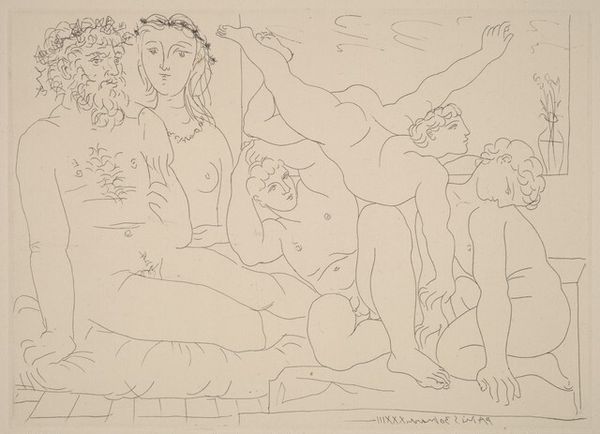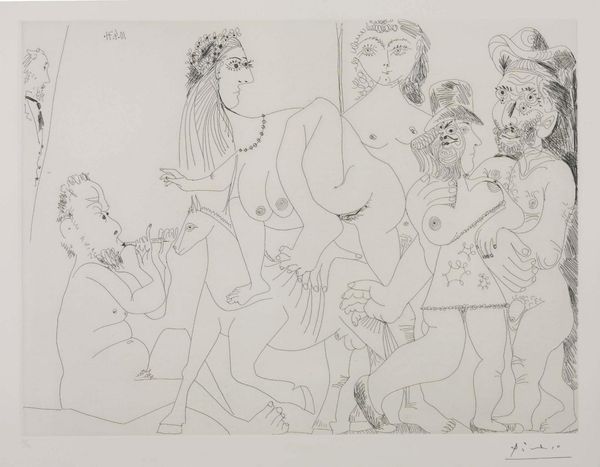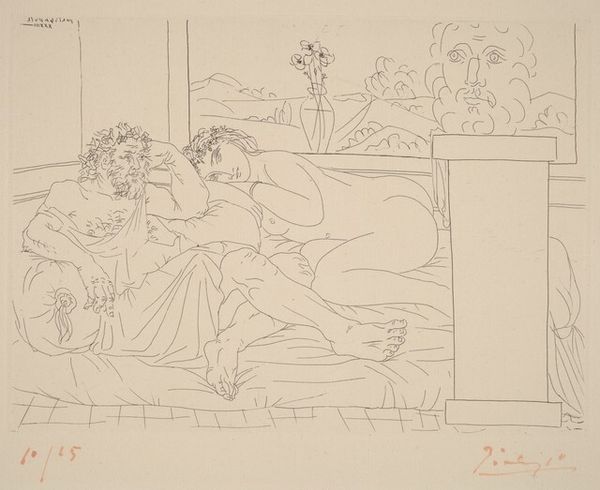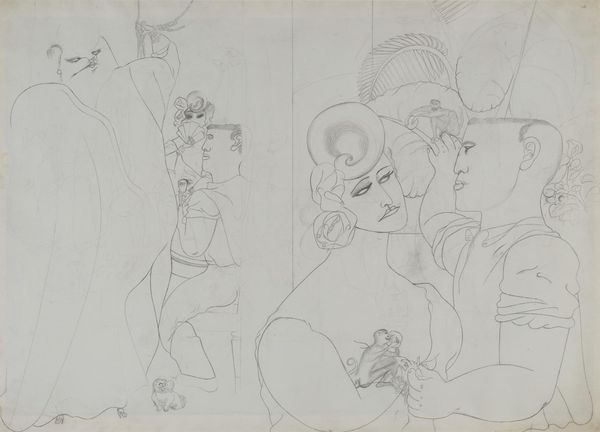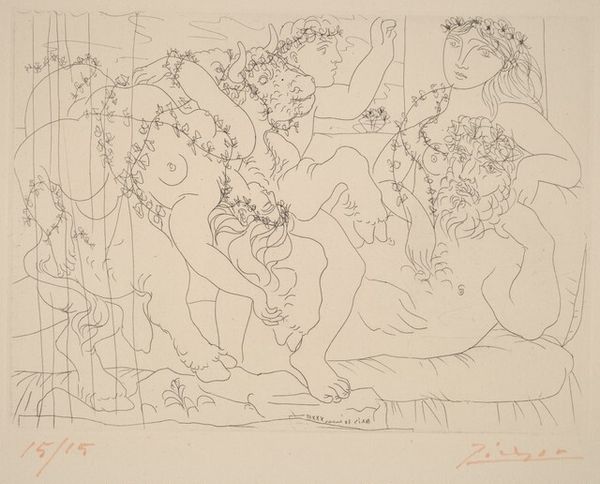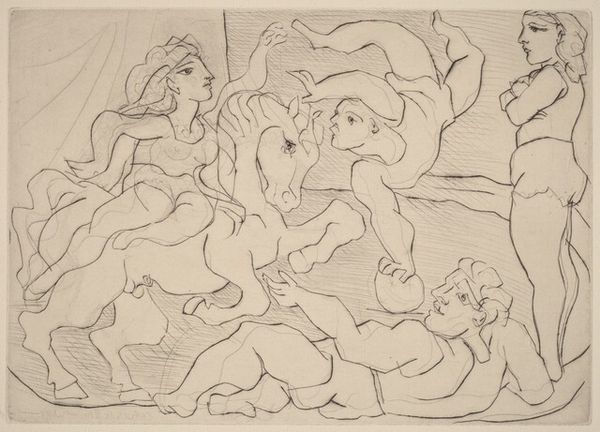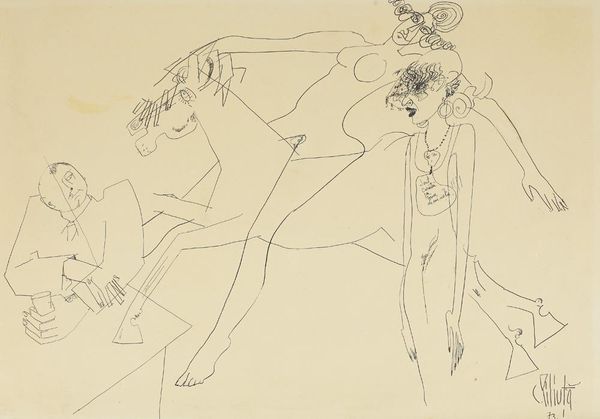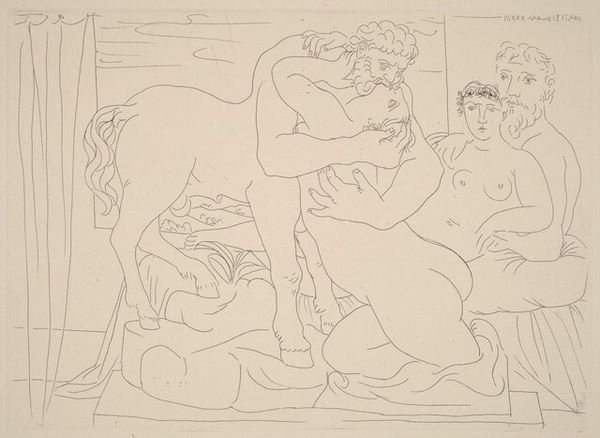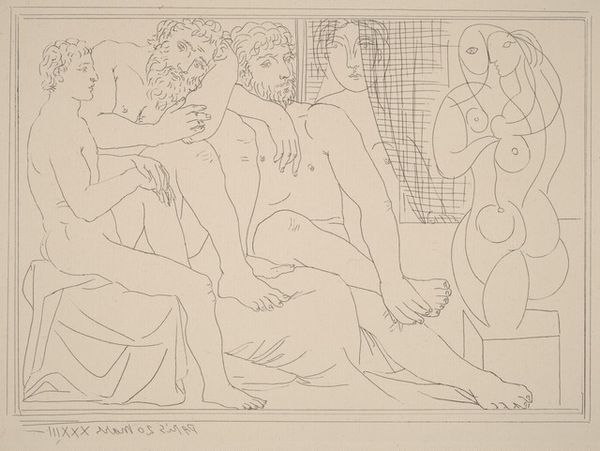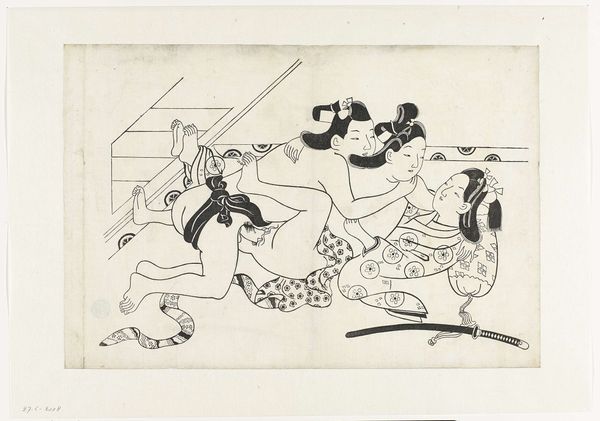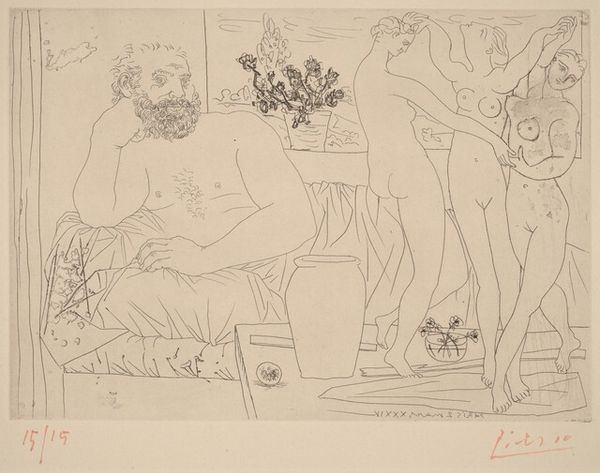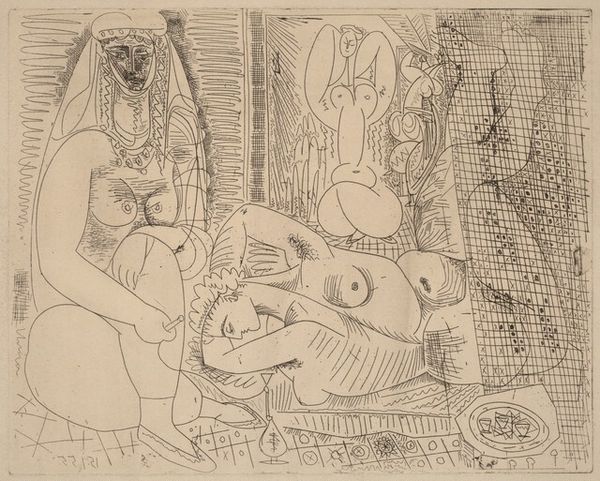
Dimensions: image: 279 x 388 mm
Copyright: © Succession Picasso/DACS 2014 | CC-BY-NC-ND 4.0 DEED, Photo: Tate
Curator: This is "Etching 20 August 1968 I" by Pablo Picasso, created in, well, August 1968. It is an etching, currently residing in the Tate Collections. It strikes me as a rather playful composition. Editor: Playful? I find the depiction of the female form here to be another example of the male gaze, reflecting societal power dynamics. Curator: But consider the technique. Picasso uses etching, a process reliant on acid and metal. This industrial method democratizes artmaking, moving away from traditional oil painting. Editor: And who has access to those materials and that labor? This piece feels rooted in a patriarchal system of production and consumption. Curator: Perhaps, but it’s also a testament to Picasso's late-career exploration of different printmaking techniques. Editor: I think we can analyze this piece for the way it intersects with ideas about labor, gender, and power. It's a complex piece of art. Curator: Yes, it’s interesting to consider how materials and methods can shift our understanding of art’s role in social discourse.
Comments
tate 6 months ago
⋮
http://www.tate.org.uk/art/artworks/picasso-etching-20-august-1968-i-l289-p77510
Join the conversation
Join millions of artists and users on Artera today and experience the ultimate creative platform.
tate 6 months ago
⋮
In 1968 Picasso made a series of 347 prints in a period of just seven months. Although he had made many etchings before, notably those published collectively as the 'Vollard Suite', he had never worked quite so intensively on a print project. The size of the series was not predetermined. The prints do not tell a story but are a group of images which collectively depicts the fantasies of an artist in old age. Aware of his declining sexual potency, Picasso cast himself in the role of a voyeur. The series encouraged a widespread revival of interest in etching among contemporary artists. Gallery label, August 2004
